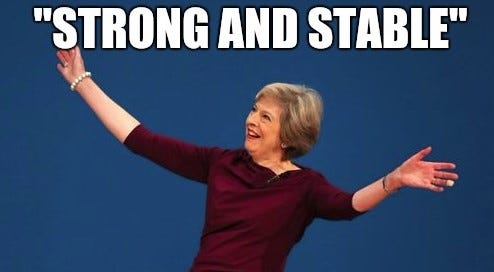To quote a weak and unstable former British Prime Minister, the UK's currency remains strong and stable amid increasing global FX and bond market volatility. French bonds and the Japanese Yen are the latest recipients of the rotating global financial chaos. Some in the UK remain in denial that it can be someone else's turn to get the ire of the bond vigilantes. But the financial storm has passed the UK, at least for now.
Sterling ended the week at its highest level for a year. The UK's economy is outperforming expectations of growth and inflation. The incoming Labour government is making all the right noises about getting the things done that its predecessor couldn't or wouldn't. Its honeymoon period won't last forever. However, while it sets out its stall, there will be time to discuss its problems and shortcomings.
But, for now, at least, things are getting better, and external factors are providing a tailwind. Last week's lower-than-expected US inflation print turned global capital to risk-on mode, juiced by a weaker dollar. Investor sentiment regarding lower US rates hasn't been this positive since Q3 last year.
Are we reprising last year's equity dispersal trade and Q4 small-cap rally?
In our review of 2023, we said,
Q4 was altogether different. As sentiment changed towards the future path of interest rates, liquidity-starved smaller companies reawakened. The NASDAQ 100 gained an impressive 14%, but the Russell 2000 rose by 22%. Is the long-awaited divergence of return starting to take shape?
Of course, we now know the answer to this question was no. Nvidia was up 150% in H1, and 10% of the S&P 500's 18% YTD rise came from just seven stocks. 2024's continuing equity market concentration and dollar strength have suppressed wider equity market outperformance, including the UK, but this might be about to change.
Following Wednesday's better-than-expected US inflation print and improved prospects for Fed rate cuts, Nvidia fell 5%, and the Russell 2000 rose 5%, a short but powerful market message with strong echoes of 2023's end-of-year rally.
Investors have been feeling their way regarding the interest rate path. Last year's Fed guidance proved optimistic. However, in the sugar rush of liquidity in Q4 last year, the dollar fell 6%, UK 10-year gilt yields dropped 120 bps, and the AIM All Share index rose 15%, its steepest rise in three years. If that all proved optimistic, the market's recent view of no US cuts until November is now overly pessimistic. The scene is set for a reprise.
What could possibly go wrong? Well, as ever, quite a lot.
While investor interest rate and dollar liquidity expectations drive the equity dispersal trade, other fundamental components could emerge.
As discussed on their All-In podcast, the Silicon Valley poker friends have discussed the lack of revenue return Big Tech has seen for its multitrillion-dollar AI-driven Nvidia capex splurge. A few trillion dollars—who's counting? Similarities between Nvidia today and Cisco in 1999 might look stale, but they remain present. The dotcom dispersal trade was painful for all equities before smaller companies and the value style enjoyed a six-year purple patch.
The lagged impact of higher interest rates and the (overrated) probability of a US soft landing must feature highly among the known known risks. As real rates run at their highest level since before the GFC, employment trends and consumer confidence measures are deteriorating. Jay Powell is at the controls and at the critical stage of landing the economy softly; he and his team may already have made a policy error.
While it looks less likely that the US economy can sustain rates of 5.5% (2.5% real) by the week, the view that the UK can weather 5.25% (3.25% real) is heroic. An August Bank of England rate cut is critical.
Last year, we wrote that,
If interest rates have peaked and we can get politicians delivering fiscal restraint, global dollar liquidity can flow again as economic growth recovers. The UK is primed for more than its fair share, as defined by its measly 4% MSCI Developed World Index weighting. We might not be there yet, but the map indicates the right path.
We got a presidential debate featuring two candidates more interested in discussing their golfing abilities than their country's escalating debt burden and fiscal policy. The US Congressional Budget Office has increased its estimate for this year's Federal Budget deficit by $450bn to $1.95tn with little media attention or scrutiny.
If Ronald Reagan's experience in 1981 is any guide, then this weekend's attempted assassination of Donald Trump will secure his position in the White House for a second term. Next week, he will announce his running mate at a Republican Party Convention that will more than ever resemble a personality cult. As the world holds its breath, wondering if Joe Biden can finish his next sentence, let alone his full presidential term, Trump's victory seems assured.
What are the implications of a Trump victory for financial markets?
The main mistake his political and media adversaries make is to assume Trump, like them, is driven by ideology. Trump is a real estate hustler and reality TV celebrity who prides himself on the Art of The Deal and his ability to play to the audience. His unpredictability is a feature, he decides according to what he regards as his best interests at the time.
We do know that Trump regards a strong stock market as an endorsement of him and has not been afraid to pressure the Fed to lower rates if it suits him. His appreciation of deals also makes him sensitive to "bad deals". As such, he is more likely to impose inflationary import tariffs. However, his stance on oil and gas drilling and granting LNG export licenses would be deflationary.
Most commentators view an upward-sloping yield curve as a Trump victory's most likely financial outcome. We must assess whether it is a bull or a bear steepening, which will depend on the economic momentum he inherits. The likelihood is that whoever wins in November will oversee a tacit inflation target slippage, triggering a further real asset price surge.
The new government has staked its future in the UK on planning reform and housebuilding. In so doing, it has added a new undeliverable target (300,000 houses a year) to net zero and migration targets—targets specialists know are impossible to deliver but remain silent lest they fail to capture ideologically driven capital for their chosen projects.
As new governments in the UK and the USA conspire in silence about the long-term implications of their debt addictions, we remain in line to follow Japan and Argentina as the before and after examples of the inevitable fiscal and monetary resets ahead. Things won't always get better, but they can, for now.









